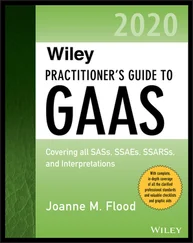Thus, the statement of cash flows prepared using the indirect method emphasizes changes in the components of most current asset and current liability accounts. Changes in inventory, accounts receivable, and other current accounts are used to determine the cash flow from operating activities. Preparers calculate the change in accounts receivable using the balances net of the allowance account in order to ensure that write‐offs of uncollectible accounts are treated properly. Other adjustments under the indirect method include changes in the account balances of deferred income taxes and the income (loss) from investments reported using the equity method. However, short‐term borrowing used to purchase equipment is classified as a financing activity.
The major drawback to the indirect method involves the user's difficulty in comprehending the information presented. This method does not show the sources or uses of cash. Only adjustments to accrual‐basis net income are shown. In some cases, the adjustments can be confusing. For instance, the sale of equipment resulting in an accrual‐basis loss would require that the loss be added to net income to arrive at net cash from operating activities. (The loss was deducted in the computation of net income, but because the sale will be shown as an investing activity, the loss must be added back to net income.)
Reconciliation of Net Income and Net Cash Flow from Operating ActivitiesWhen the direct method is used, a schedule reconciling net income to net cash flows from operating activities must also be provided. That reconciliation must be presented in a separate schedule. (ASC 230‐10‐45‐30) That schedule reports the same information as the operating activities section prepared using the indirect method. Therefore, a firm must prepare and present both the direct and indirect methods when using the direct method for reporting cash from operating activities.
| Reconciliation of Net Income to Net Cash Flow from Operating Activities |
| Type of Entity |
Method |
Presentation |
| Business |
Direct |
A separate schedule |
| Indirect |
Within the statement of cash flows or in a separate schedule. * |
| Not‐for‐profit |
Direct |
Not required, see ASC 953‐320‐45‐29) |
| Indirect |
Same as above for business entities. |
| ASC 230‐10‐45‐29 through 45‐32D |
*If presented separately, the statement of cash flow reports only the net cash flow from operating activities. If the reconciliation is presented in the statement of cash flows, adjustments to net income to determine net cash flow from operating activities must be identified as reconciling items. (ASC 230‐10‐45‐31 and 45‐32)
PRESENTATION AND DISCLOSURE EXAMPLES
Example 6.1: Statement of Cash Flows (without Details of Operating Activities)
The following exhibit demonstrates the classification of cash receipts and disbursements in the investing and financing activities of a statement of cash flows (though without detail of the required operating activities section).
| Liquid Corporation Statement of Cash Flows For the Year Ended December 31, 20X1 |
| Net cash flows from operating activities |
|
$ xxx |
| Cash flows from investing activities: |
|
|
| Purchase of property, plant, and equipment |
$(xxx) |
|
| Proceeds from sales of investments |
Xxx |
|
| Purchases of investments |
(xxx) |
|
| Sale of equipment |
Xx |
|
| Collection of notes receivable |
Xx |
|
| Net cash provided by (used in) investing activities |
|
(xx) |
| Cash flows from financing activities: |
|
|
| Dividend payments |
(xxx) |
|
| Payment of contingent consideration |
(xxx) |
|
| Sale of common stock |
Xxx |
|
| Repayment of long‐term debt |
(xx) |
|
| Reduction of notes payable |
(xx) |
|
| Proceeds from debt |
Xxx |
|
| Payment of debt issue costs |
(xx) |
|
| Principal payments under lease obligations |
(xxx) |
|
| Net cash provided by financing activities |
|
xx |
| Effect of exchange rate changes on cash, cash equivalents, and restricted cash |
|
xx |
| Cash, cash equivalents, and restricted cash |
|
|
| Net increase (decrease) in cash, cash equivalents, and restricted cash and restricted cash equivalents |
|
xxx |
| Cash, cash equivalents, and restricted cash at beginning of year |
|
xxx |
| Cash, cash equivalents, and restricted cash at end of year |
|
$ xxx |
| Supplemental disclosure of cash flow information |
|
|
| Cash paid for interest, net of amounts capitalized |
|
($xxx) |
| Cash paid for income taxes, net of refunds |
|
($xxx) |
| Schedule of noncash financing and investing activities: |
|
|
| Conversion of bonds into common stock |
|
$ xxx |
| Right‐to‐use property acquired in exchange for a lease liability |
|
$ xxx |
| Dividends declared, not paid |
|
$ xxx |
Operating Activities PresentationThe operating activities section of the statement of cash flows can be presented under the direct method or the indirect method.
Exhibit—Converting Income Statement Amounts from the Accrual Basis to the Cash Basis—Direct Method
| Accrual Basis |
|
Additions |
|
Deductions |
|
Cash Basis |
| Net sales |
+ |
Beginning A/R |
– |
Ending A/R |
= |
Cash received from customers |
| Cost of goods sold |
+ |
Ending inventory Beginning A/P |
– |
Manufacturing depreciation and amortization Beginning inventory Ending A/P |
= |
Cash paid to suppliers |
| Operating expenses |
+ |
Ending prepaid expenses Beginning accrued expenses |
– |
Sales and administrative depreciation and amortization Beginning prepaid expenses Ending accrued expenses payable Bad debts expense |
= |
Cash paid for operating expenses |
Example 6.2: Operating Activities: Formats for Direct and Indirect Methods
| Direct Method |
| Cash flows from operating activities: |
|
|
| Cash received from sale of goods |
$xxx |
|
| Cash interest received |
xxx |
|
| Cash dividends received |
xxx |
|
| Cash provided by operating activities |
|
$xxx |
| Cash paid to suppliers |
(xxx) |
|
| Cash paid for operating expenses |
(xxx) |
|
| Cash interest paid |
(xxx) |
|
| Cash paid for taxes |
(xxx) |
|
| Cash disbursed for operating activities |
|
(xxx) |
| Net cash flows from operating activities |
|
$xxx |
| Indirect Method |
| Cash flows from operating activities: |
|
|
| Net income |
|
$ xx |
| Add/deduct items not affecting cash: |
|
|
| Decrease (increase) in accounts receivable |
|
(xx) |
| Depreciation and amortization expense |
|
xx |
| Increase (decrease) in accounts payable |
|
xx |
| Decrease (increase) in inventories |
|
xx |
| Loss on sale of equipment |
|
|
| Net cash flows from operating activities |
|
$ xx |
Example 6.3: Statement of Cash Consolidated Entities
Читать дальше












